Have you thought about using mirrors in your garden?
This unexpected piece of home décor lends itself so well to an outdoor environment.
In the home, we use them functionally (like for checking your hair on the way out the door). But also to enliven our spaces by reflecting light or creatively modifying a space’s feel.
Outdoors, we can do the same thing, but there are some special considerations that allow you to get even more creative.
How to fix size, light, and balance problems in your garden with a mirror
7 Ideas for Using Mirrors in Your Garden
There are many good reasons and problems to solve with the use of a reflective surface in the garden – here are some you might not be thinking of.
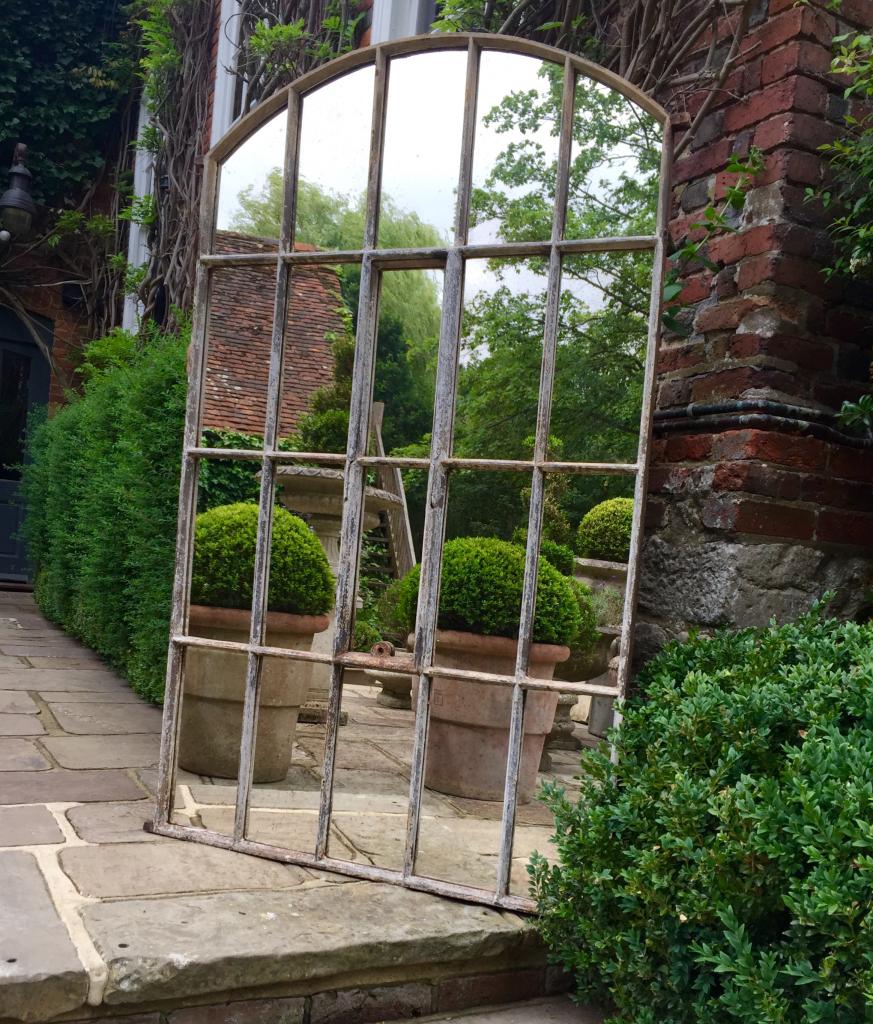
Mirrors can help give the illusion of extra space.
In a small garden, place an illusion mirror (which is just a regular mirror) to trick the mind into thinking that there is more garden and more to see.
Tip: Place mirrors on walls in the shape of a doorway or window and the reflection will give the illusion that the garden continues to another area beyond. Frame it with plants or put a gate in front of the mirror to highlight the illusion.
Reflect the beauty of your plants and flowers.
With a mirror, suddenly, one flower looks like two. If you get clever with multiple mirrors, it might make it look even more. Put a mirror where plants can be around it so that you multiply their impact.
Tip: Magnify the impact of special plants or other elements by making them seem bigger (double sized!) with a strategically mirror.
Use a mirror to brighten up a dark corner (and maybe even create a microclimate)
Mirrors reflect light and enliven everything around them. A mirror can also alter a microclimate. By reflecting light and warmth, the microclimate could change enough to allow you to grow less hardy plants or plants that need more sunlight.
Mirrored surfaces on sculptural forms add movement and interest in an unexpected way.
This type of sculpture doesn’t dominate stylistically like some other more traditional sculpture might. Instead, it adds mystery by altering the obvious and making it a little more unexpected. I adore this mirrored monolith (bottom of post) at the Pettifers Garden in Oxfordshire, England – if this is too much for your garden, consider something smaller – like a mirrored gazing ball.
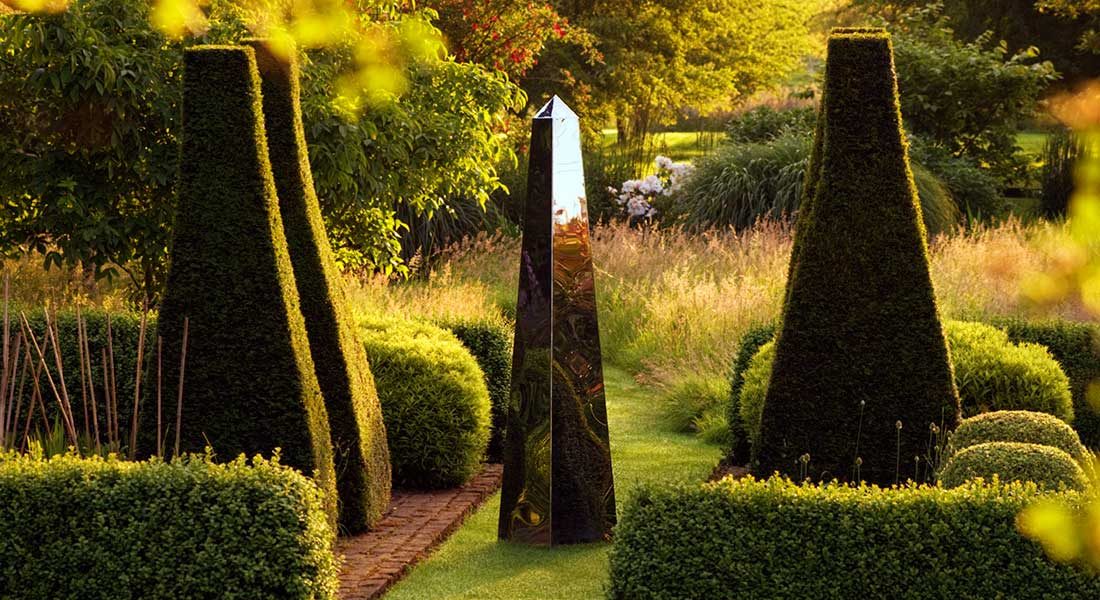
Play with mirrors to create an illusion
Strategically placed mirrors can make a hedge look like it is longer or can create a new perspective line that alters the feeling of a space. Think about mirrored halls and fun houses and how you can use those tricks to make a statement in your garden.
Consider a mirror near a seating or dining area
When eating outdoors, candles and warm lights are often used around the table. A mirror will help to highlight this warmth and give a greater sense of enclosure.
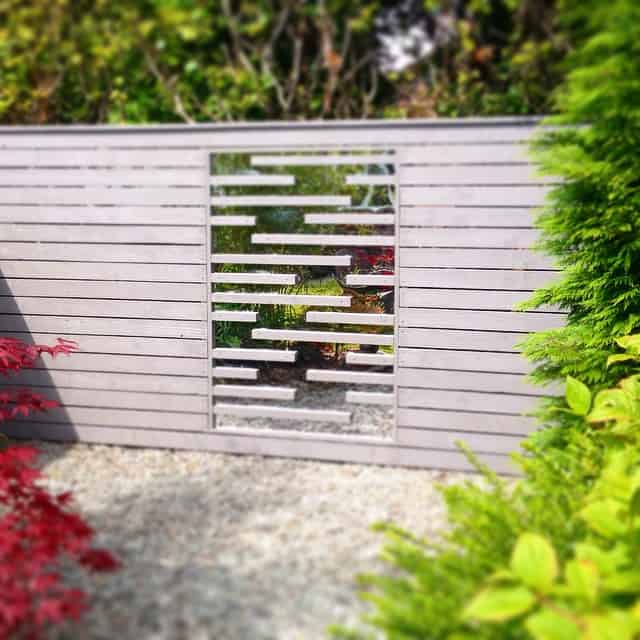
Not all mirrors are vertical.
Water in the garden is a great natural mirror that reflects the sky and the landscape that surrounds it. Ponds are great for this, but even puddles can make a scene more interesting.
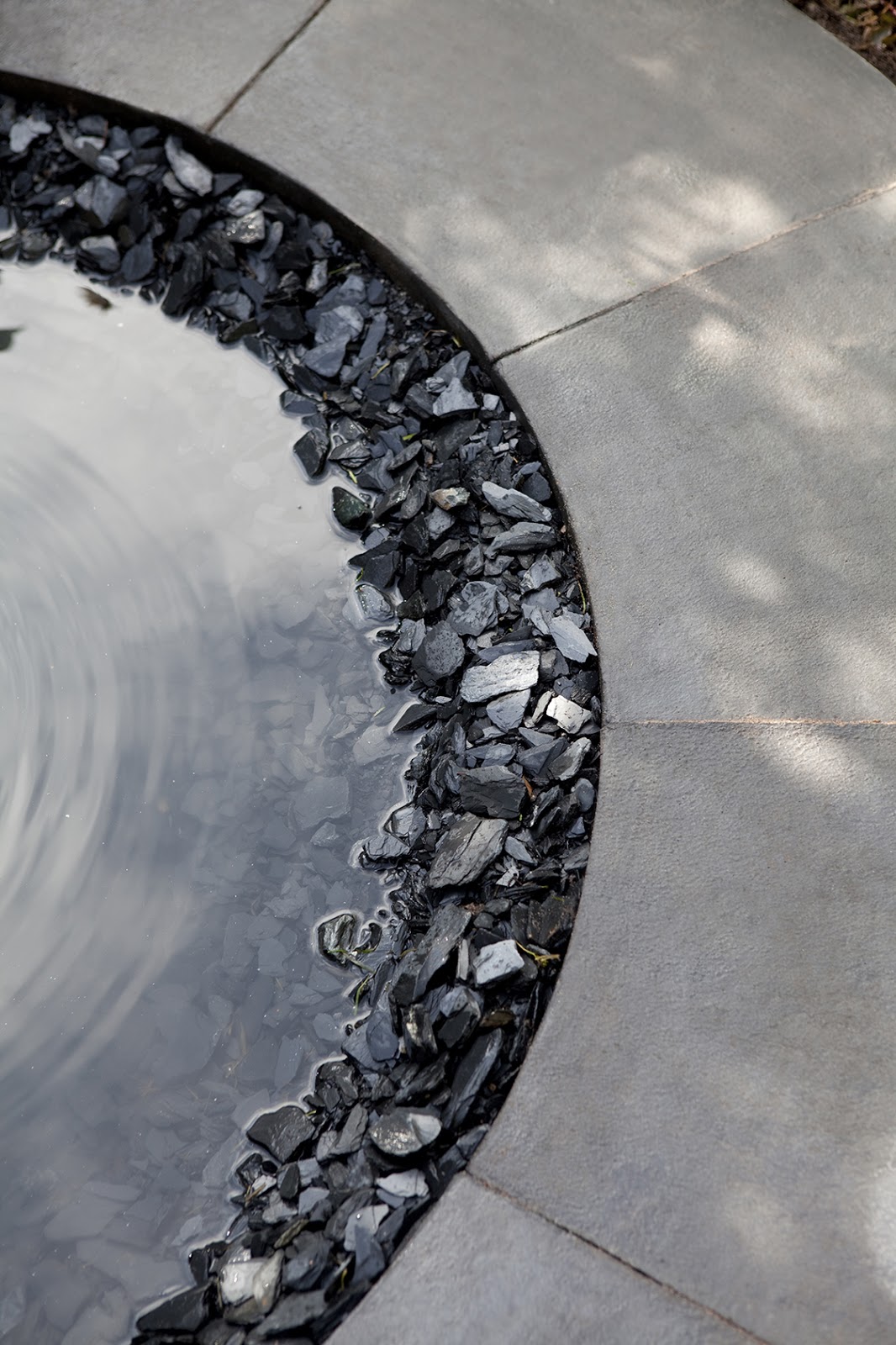
How To Weather-Proof Your Garden Mirror
Using mirrors outside does create some practical issues. While there is no magic fix to protect a mirror that’s placed outdoors, there are a few things you can do to extend the life of an interior mirror that is used outside.
What is a mirror made of? – Glass vs Plastic vs Stainless Steel Mirrors for the Garden
Modern mirroring is more durable than older mirroring. Personally, I don’t mind a “weathered” looking mirror – particularly in the garden, but if you are concerned, you can seal the edges of the mirror to its frame by using a water-proof silicone caulk or a spray sealant. Run a bead of caulk wherever water might seep in between the frame and mirror, or cover the whole back and sides with a spray. This is the best advice I have for extending the life of a glass mirror outdoors – it isn’t perfect, but it should help. Remember, too, that mirrors are not terribly expensive, and they are recyclable – so if the weathering starts to get too much for your taste, changing it up for a new one isn’t a big cost.
Glass mirrors
A glass mirror has a silver backing that gives it a reflective quality. This backing is vulnerable to water. Obviously, placing a mirror outside is going to expose it to the elements. Over time, the silver backing will start to bubble or peel. How many years you will get from a mirror is hard to say – it will depend on your climate and the exposure of the piece. But if you protect it and take some precautions, you can extend the life.
Acrylic Outdoor mirrors
By avoiding glass and using acrylic mirrors instead, you can solve many of the issues with using glass outdoors.
Acrylic is safer than glass and lighter in weight. If you want your mirror to retain its reflective qualities over many years, think about investing in an acrylic one.
Acrylic Mirror mirrors are about 20 times stronger than glass, and they are well suited for outdoor use.
Not only is acrylic is much more impact resistant, it is also much less likely to cause injury if it breaks. If your acrylic mirror does break, you will not be dealing with lots of shards of shattered glass (when they break, the break is cleaner).
The drawback is that acrylic mirrors are not as clear and reflective as glass mirrors. Also – the bigger the mirror, the more distortion (think fun house mirror) that you will have. If you want to avoid this, increase the thickness of the mirror (but also increase the price).
There are two types available of plastic mirrors – acrylic and polycarbonate. Big-box DIY stores usually carry the acrylic type. You can also find suppliers for both acrylic and polycarbonate mirrors online.
Another big advantage of plastic mirrors for the garden is that they have some flexibility.
A glass mirror will be very rigid – any pressure point will result in a break – conversely, with acrylic or plastic mirrors, you can bend them. If you do this, you will see the distortion caused by bending or using it against an uneven surface, but it will not break.
Which is better, acrylic or polycarbonate Mirror?
Polycarbonate is about twice the price of acrylic mirror but is 200 times stronger than glass (vs 20 x stronger for Acrylic), and its reflective qualities are better. This is the best option for an exterior outdoor use mirror if you are looking for a long-term high-end option.
Stainless steel Garden Mirrors
Another mirror finish material to consider is stainless steel. The reflection is similar to glass mirrors and while this is also an expensive option, it can be beautifully incorporated into sculpture and architecture in the garden.
How to Hang or Attach Mirrors for the Garden
Make sure that the mirror is securely attached to wherever you’re going to hang it. Assuming that you are using a mirror with a wooden frame, you can screw the corners of the frame directly to the surface where it will be mounted. Adhesives are also an option.
If you have a mirror without a frame that has holes drilled in the corners (such as an old bathroom mirror), you can mount it using screws and preferably rubber washers. You can also hang it using NON-RUSTING wire attached to the back, with a securely placed hanger on the hanging surface. I don’t prefer this method, though, as anything that is outside is subject to the elements – and wind, in particular, can catch and pull something right off a wall.
Mounting the mirror flush and firmly should be the goal.
Is Fire a Concern with Outdoor Mirrors?
I’ve never heard of this being a legitimate problem in the garden, but I have seen mention of it a time or two, so I will discuss it.
Be careful that there will be no problem with the mirror’s reflection starting a fire. It sounds a bit impossible, and it mostly is – but not completely.
Mirrors can reflect and focus light intensely enough to ignite things – those bushcraft YouTube guys do it all the time.
Watch when and where the sun’s reflection is directed throughout the day. Notice where it lands and how hot it gets. The heat of the sun reflected and magnified with a mirror, can catch leaves, pine needles, and dried grasses on fire if the conditions are just right.

Warning: Birds + Garden Mirrors
A Mirror Can Put Our Feathered Friends Into A Tizzy … Or Worse 🙁
Keep wildlife in mind when installing a garden mirror. Some birds will batter themselves to death against a mirror. They also might fly into it because they don’t realize it’s a barrier (much the same way that they sometimes fly into windows), or they might attack the “other bird” that is intruding on their territory.
Depending on the location and placement of the mirror, this could be a problem that you need to address.
Here is a helpful video that talks about research being done to help create building materials that kill less birds.
The key appears to be adding lines that are no more than 2 inches horizontally or 4 inches vertically. Keep an eye out for bird-friendly glass and mirrors in the market, and in the interim, consider adding a suspended mesh in front of the mirror to prevent accidents.
Water mirrors
If you’re concerned about wildlife, the safest way to incorporate mirrors into the garden is to add still water. A pond is also a horizontal mirror that serves wildlife of all sorts.
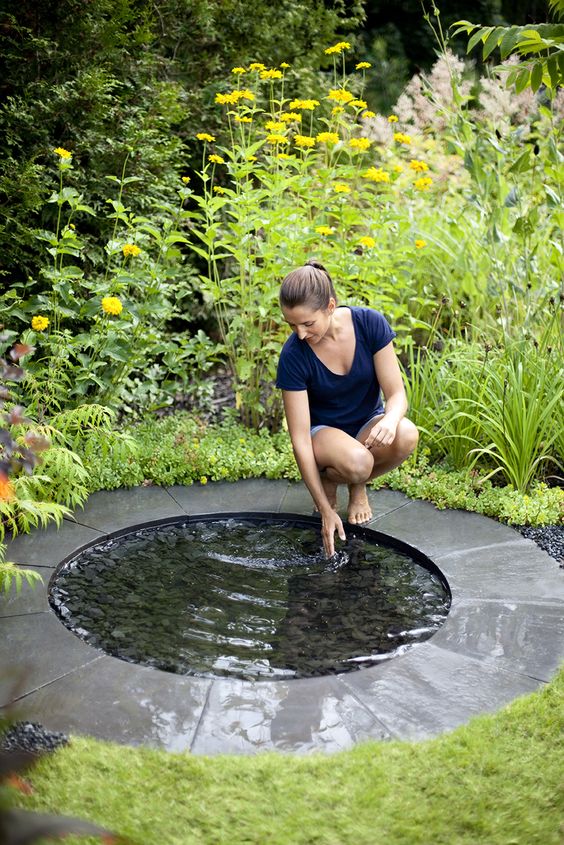
Do you have questions about using mirrors outside? If so, leave them in the comments and I’ll do my best to answer!

[…] How to use Mirrors in the Garden And Improve the Design […]